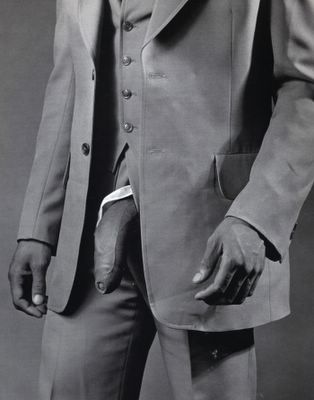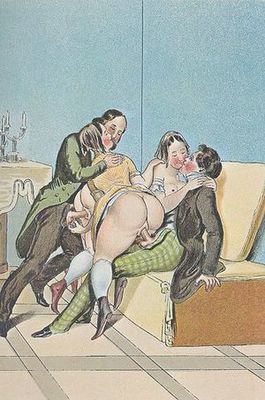For The Lips of St. Thomas (1975), Abramovic sat at a table, eating a kilo of honey and a liter of wine, then proceeded to cut a five-point star into her stomach (with a razor blade) and whip herself until her body felt totally numb.
Franklin: Supergirl commented, I know guys in the Air Force who would do that for a dollar. Well said, my love.
As people start posting comments, there is this comment (referring to Abramovic), from an art teacher at one of our local institutions!
Opie: With all that wine and honey she didn't need a star, she needed a drain.
Or this one from a participant -whose job is described by another commenter as "snide and dismissive in tone:"
Jack: Well, you get the idea. Any connection, real or imagined, to the Abramovic stunt, I mean, performance, is purely coincidental. Far be it from me to impugn such an extravagant exhibition of pretentious, pointless posturing.
Believe it or not, they make no distinction between performance art and stunts. So, I try to explain performance art from a historic point of view:
AT: Performance art has a historic context: the civil struggles of the 1960’s in the USA and Europe, the Vietnam War, the Cold War. For these and other reasons (that we can argue some other time) the body became a locus for artistic experimentation… I don’t think that artists like Burden, Ono, de Maria, Schneeman, Beuys, Acconci, Nauman, Nitsch, Pane, Rossler, Mendieta and many more, were doing just stunts. On the contrary, I’d say that they lived at a time when the exploration (of the possibilities of the body as art) became an imperative: The body as (simultaneously) object and subject; body as transgression (the Viennese Actionists), as sex prop (Schneeman, Ono), as caricature (Nauman), as ritual (Abramovic), as political satire (Rossler), etc, etc. After Existentialism and Humanism (and the Holocaust, Hiroshima, Vietnam, and Pol Pot), all these artists explored valid questions: Is the body essential component of the self? What’s gender? What’s a female? Is the body more than representation?
This is the response I get from the same art teacher:
Opie: Justifying the elevation of such activities to the status of art by cooking up long lists of names, events and philosophies liberally spiced with current artspeak trend terms and unnamed "experts" is not intellectually responsible, no matter how many others are doing the same thing. In my opinion, anyone who buys this nonsense has lost the ability for self-determined judgement of art.
It did not matter that I produced a long list of texts by scholars on performance art (later, my comment inexplicably disappeared from the thread... coincidence?). It seems more like an empty exercise in derision and contempt, than a substantial reasoning of why they hate -or for that matter- write off performance art altogether as a legitimate art movement. I particularly single out this comment (for a person who even has the candidness of admitting she/he hasn’t seen Marina’s performance):
KQ: I haven't seen 'Lips of St.Thomas', but watching a sniper's process of executing his target 2 kilometers away with 1 shot is a performance I'd spend $$ to see...
Later, the moderator of the blog retorts:
Franklin: However, if some guy in the privacy of his home decided to carve a star in his stomach for expressive purposes, we might fairly advocate some mental health care for him.
Even after I left the thread (the discussion had already moved from the original topic to a rummaging of sorts; ad hominem platitudes, etc. Some Marc County adds:
Marc County: That's funny, I suppose, but... what argument does AT believe he is referring to? I mean, Deleuze and Guattari themselves could show up here, and I bet it STILL wouldn't amount to a real argument, any more than AT's pugnacious comments do. Seriously, these fundamentalists all sound the same to me, so sorry, it's all just more fodder for ridicule, like this... the true-believers refuse to let their dream die, truth be damned.
Frankly, I didn't know I was a fundamentalist! (which is why I have artblog.net in our page?)
The last in the thread is from (none other than a) composer of new music and a performer himself (whom I've seen, shirtless and donning a cowboy hat, riding an amplifier as if it was a horse, while making a noise piece), one whom you'd guess can understand what performance art is all about (he misses no opportunity to take a stab at our Art Issue class):
Rene Barge: Here is Pomo at its finest, perhaps those who teach “issues” can include this in the curriculum.
Poor guy, cannot even understand that some of the music or the art he makes has the stamp of a time and place written all over it.
My Conclusion? Performance art is a real force!















